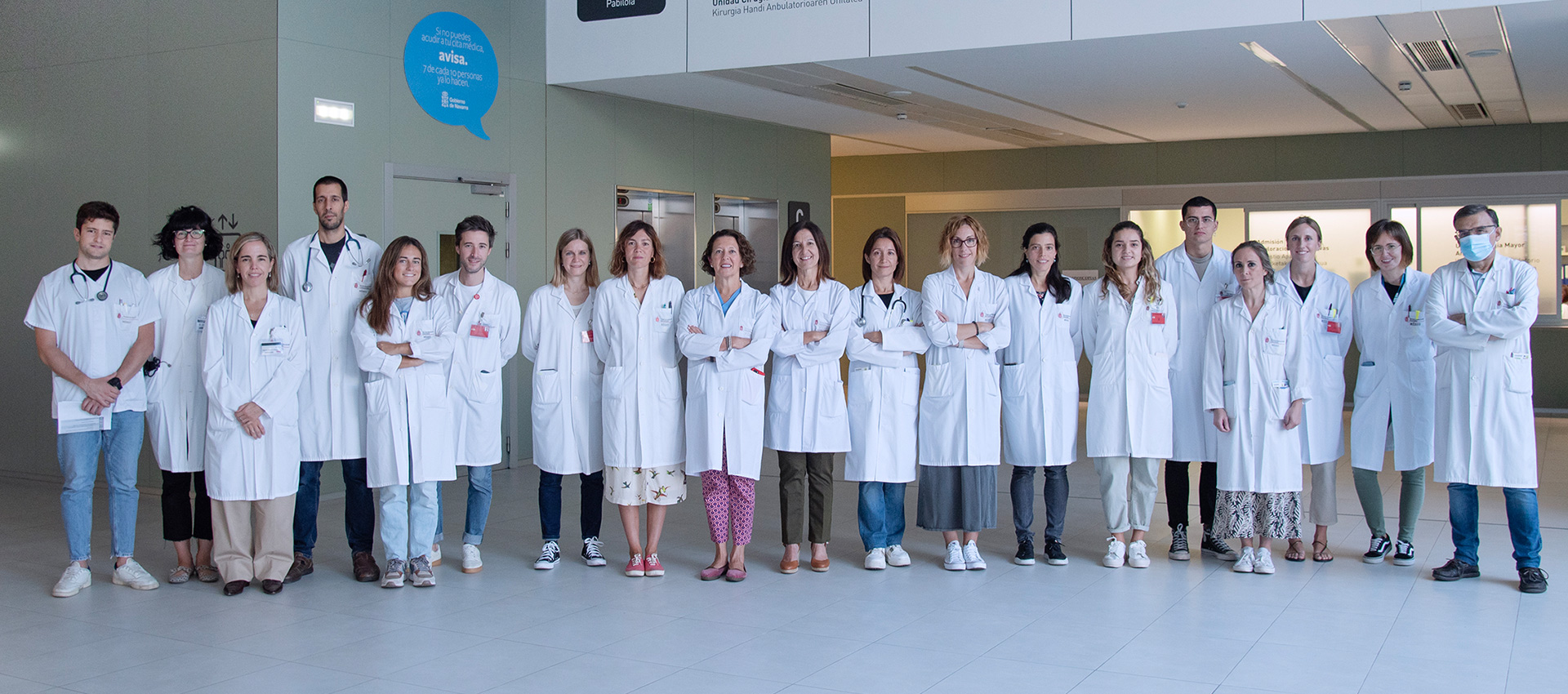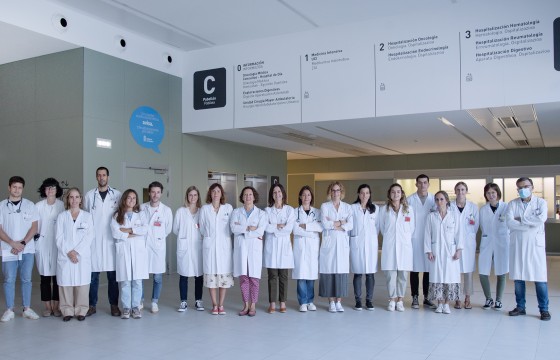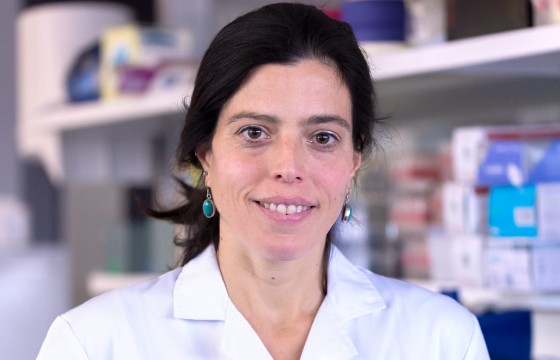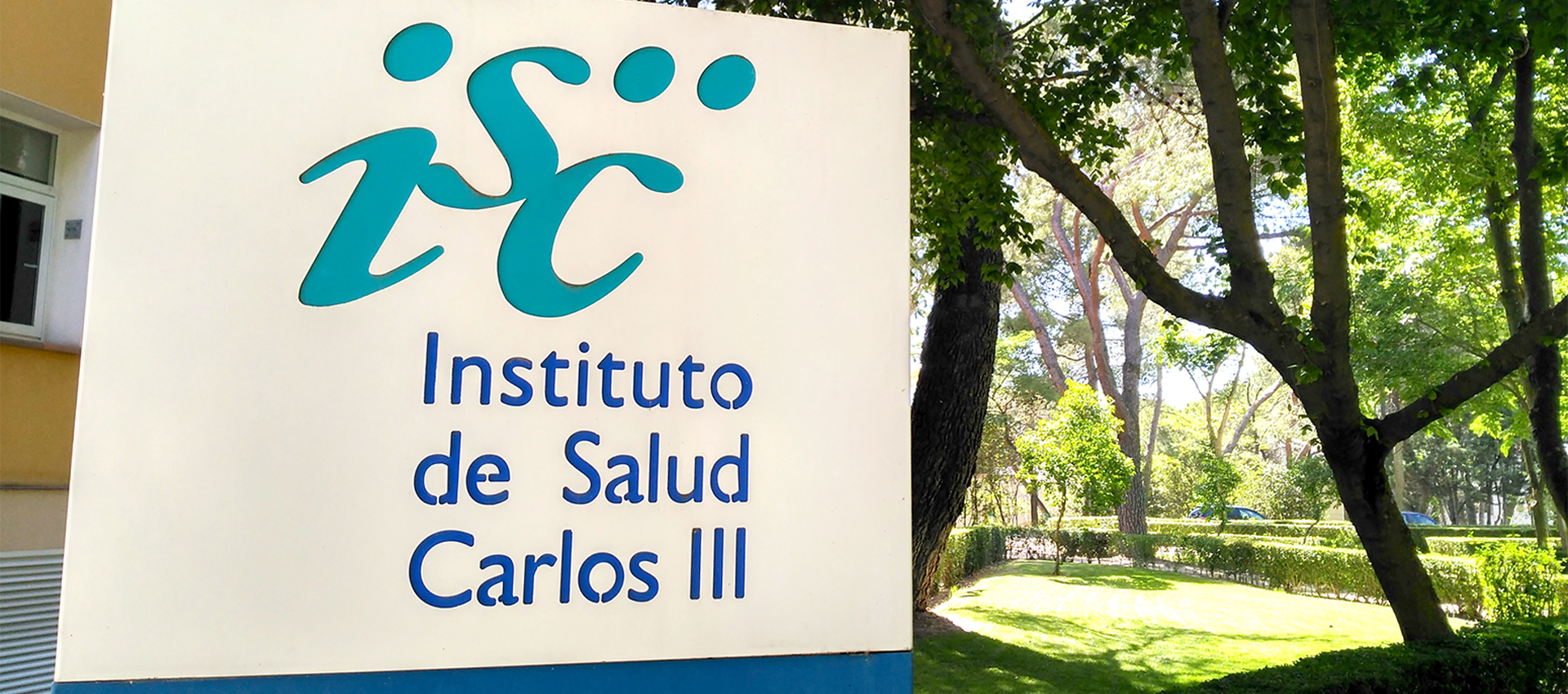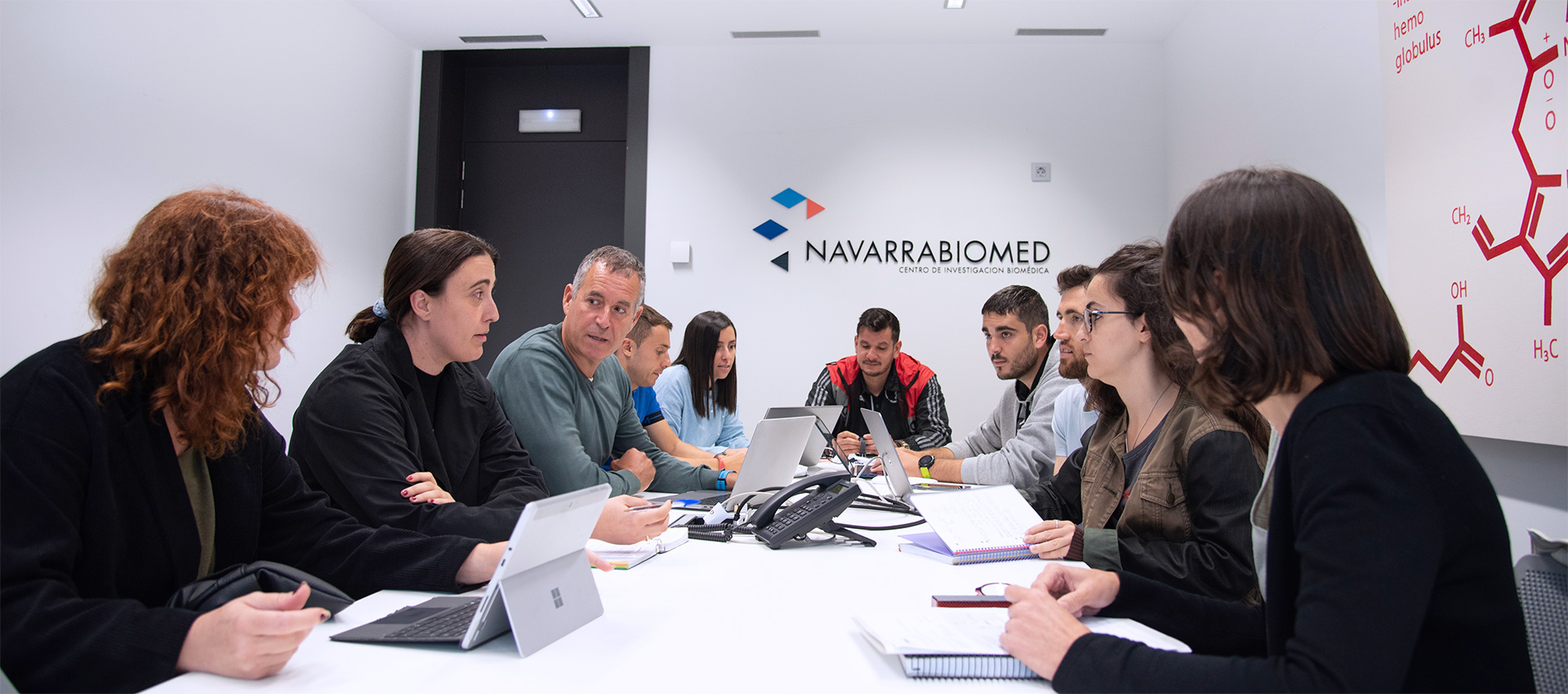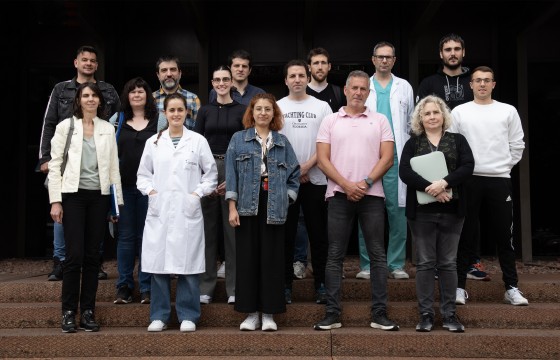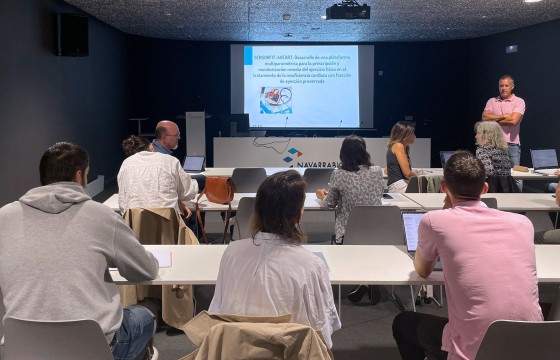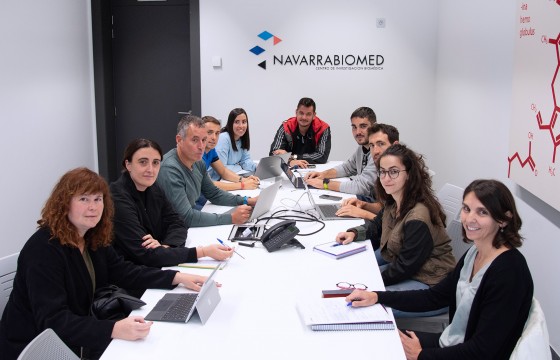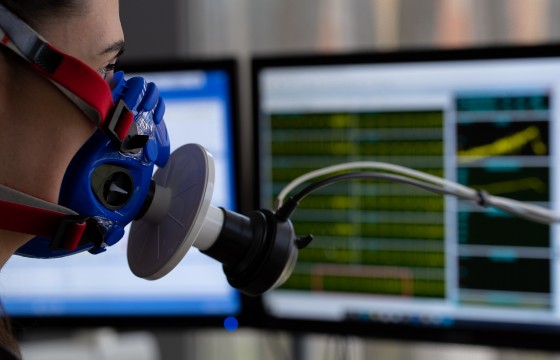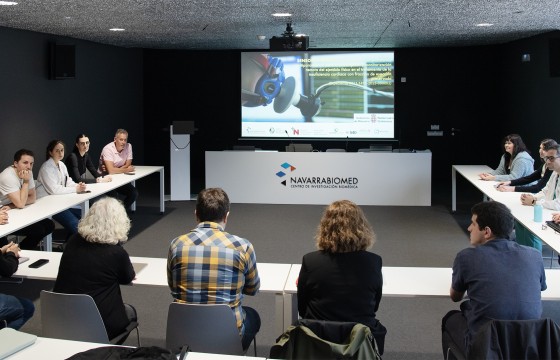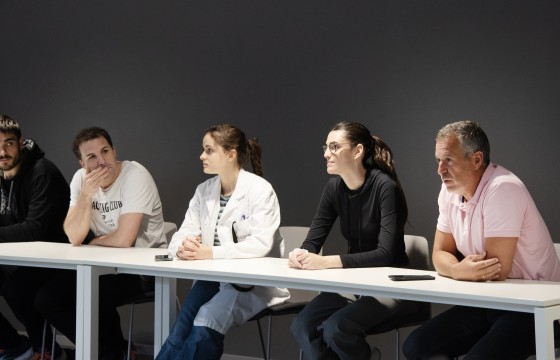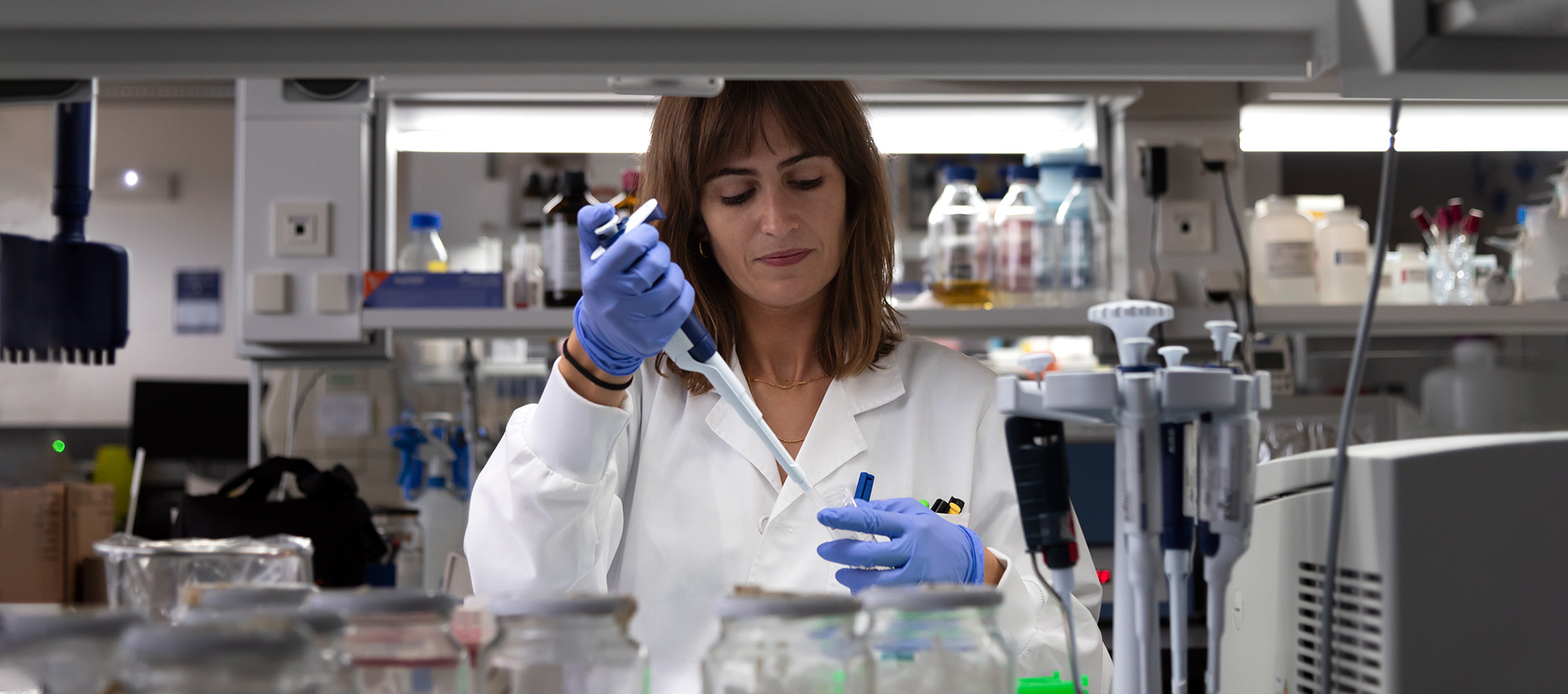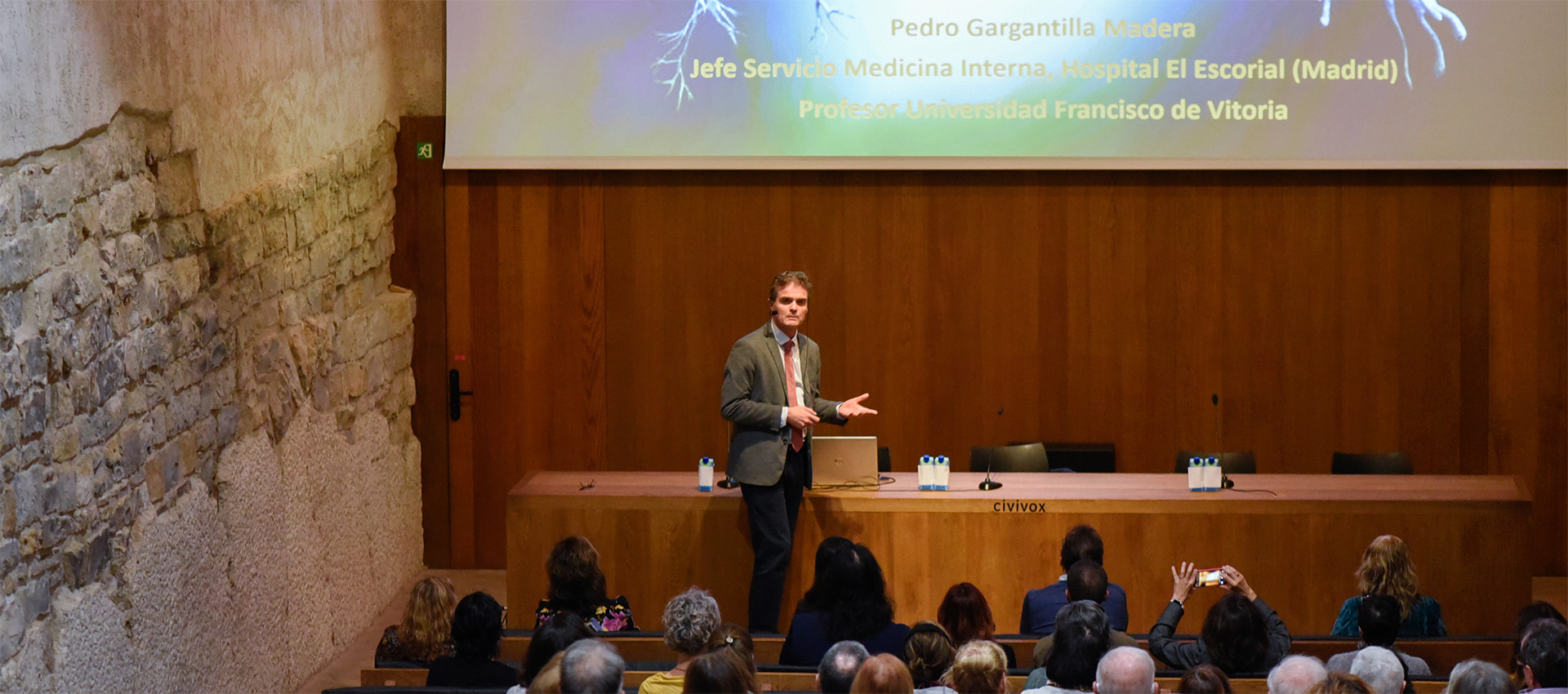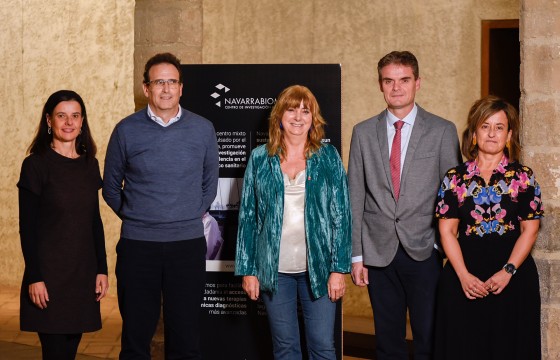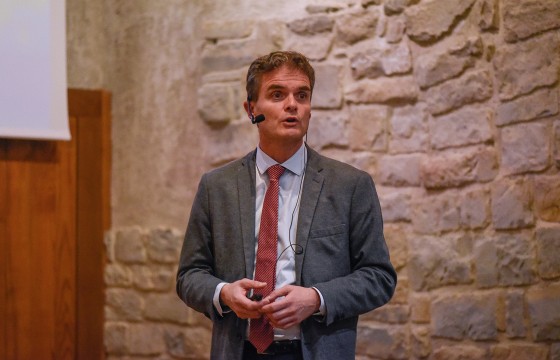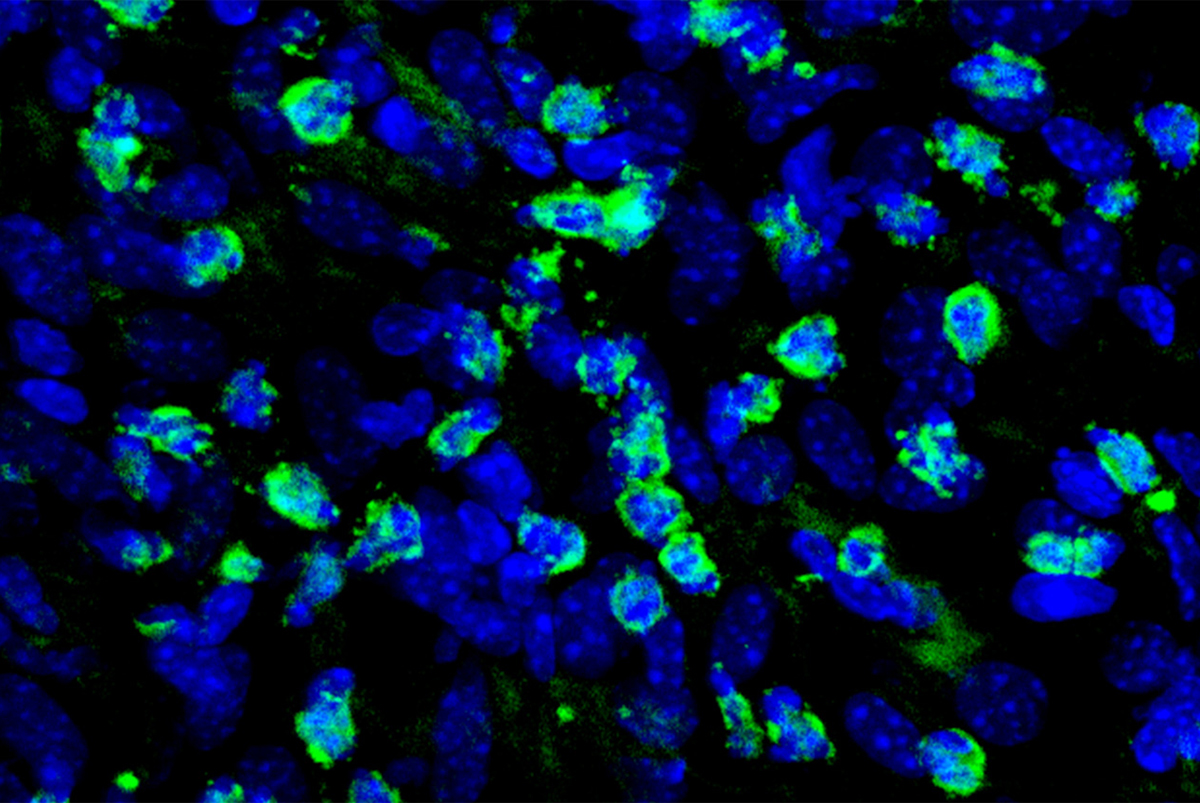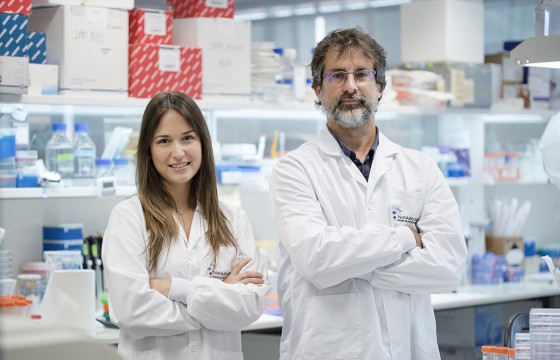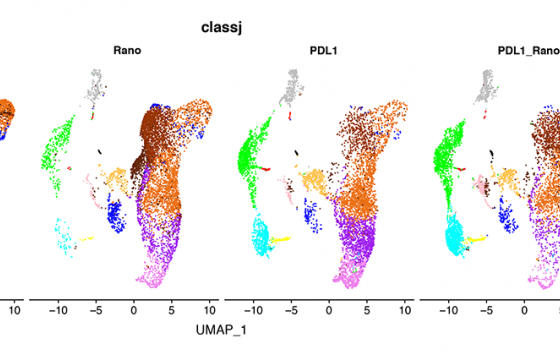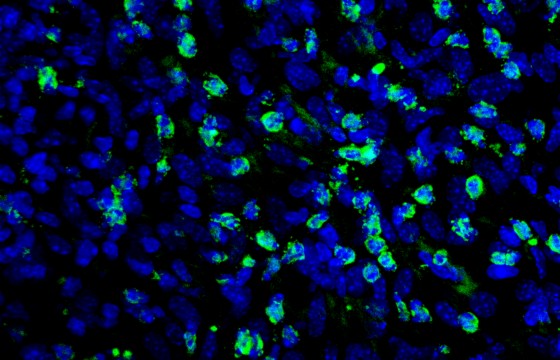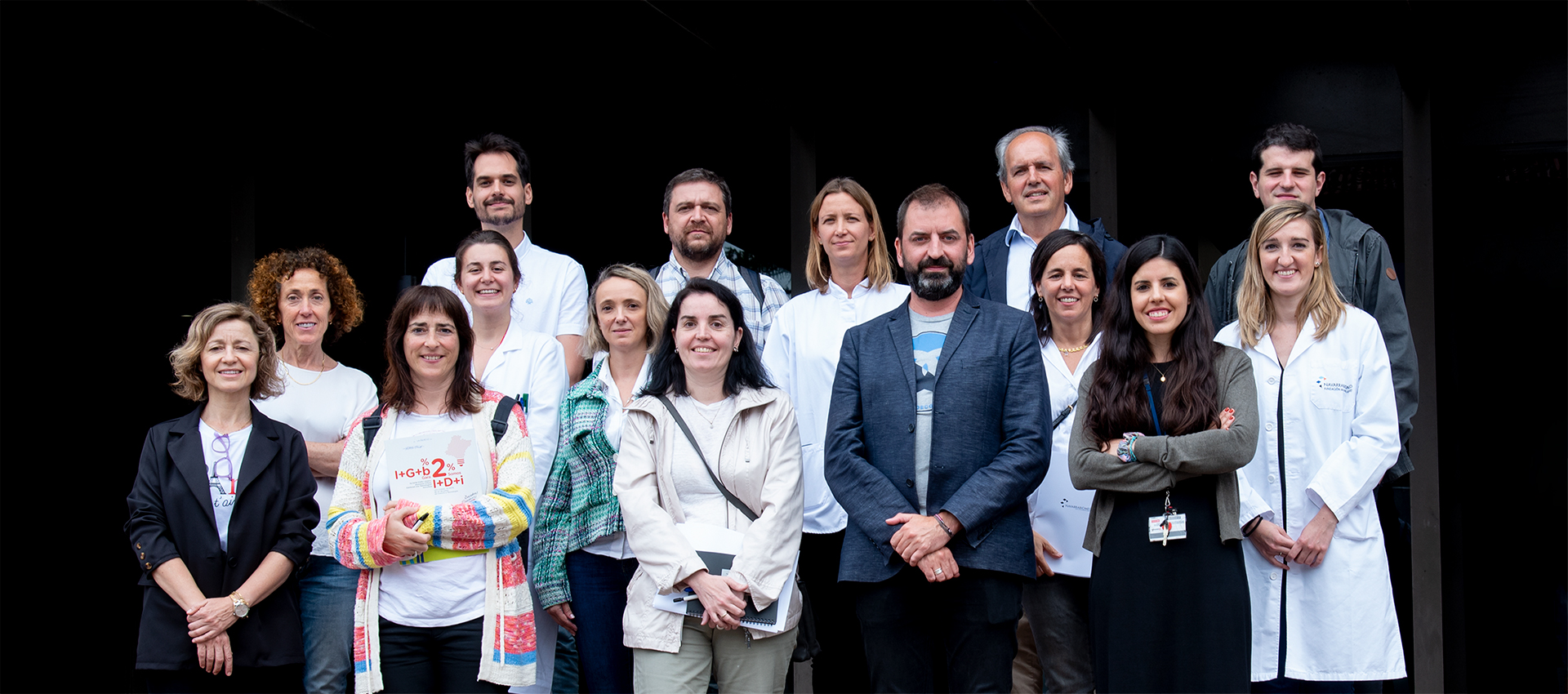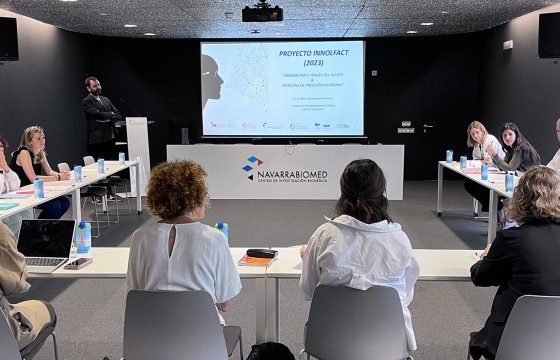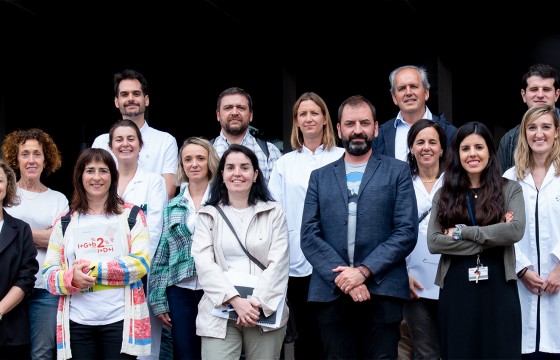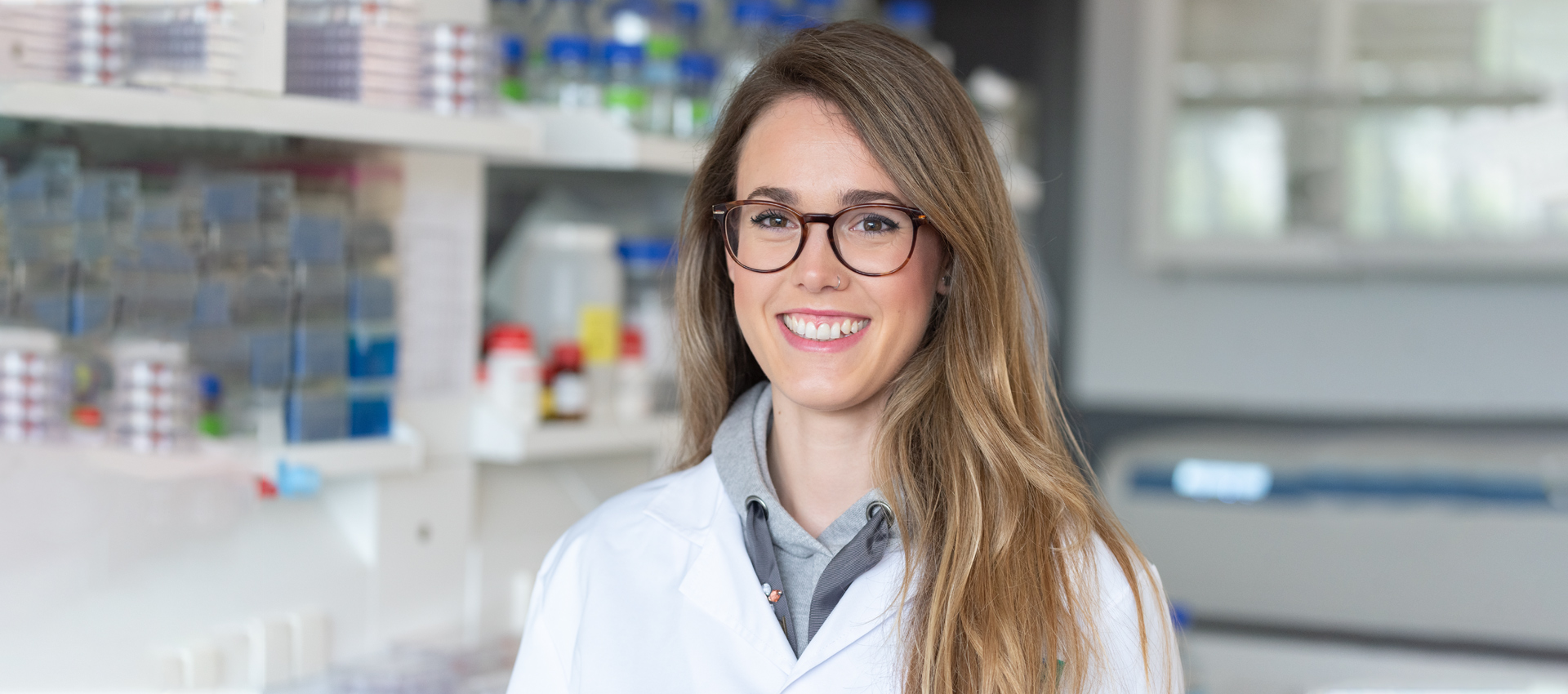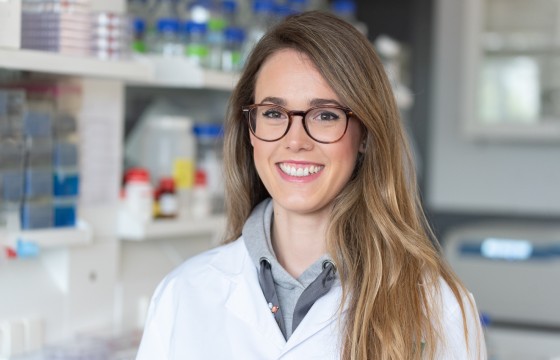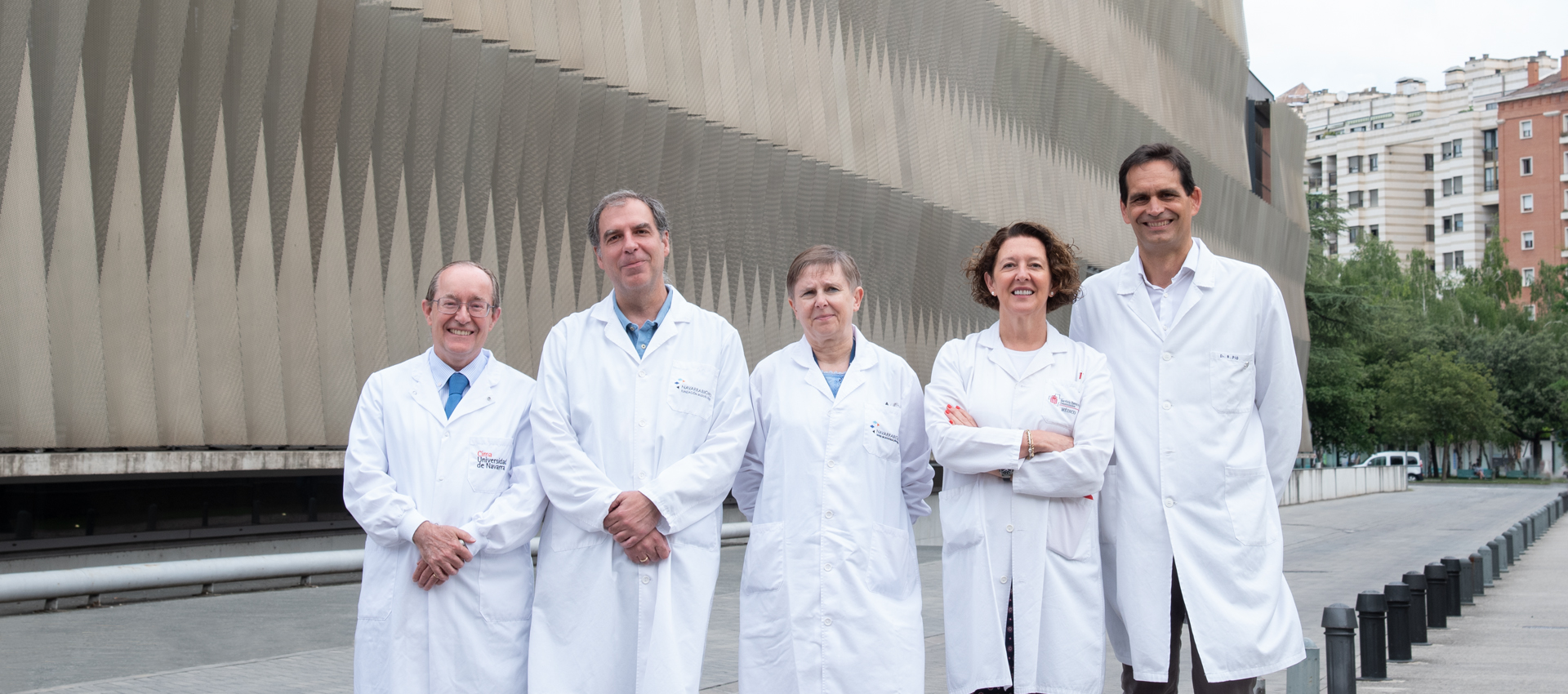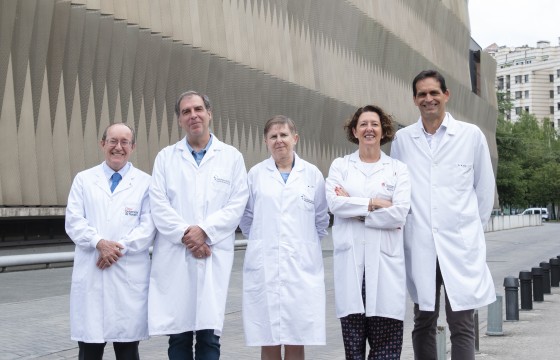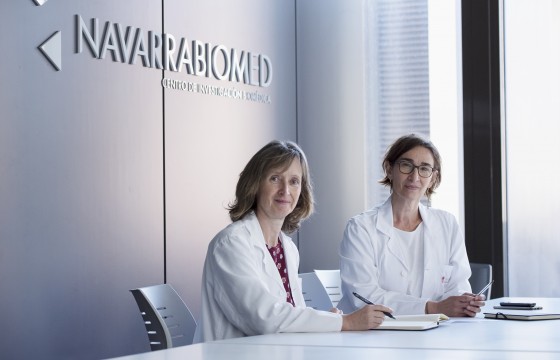- Vice Chair Ollo opened a conference organized by Navarrabiomed and the Directorate General for External Action to strengthen public health taking advantage of the European framework
The Condestable Palace of Pamplona / Iruña hosted this afternoon the meeting “Public health: researching and progressing with Europe - Scientific progress that saves lives”, whose objective was to convey to citizens the European Union's commitment to public health and biomedical research as a guarantee of innovative, sustainable and high-quality medical care.
The conference, organized by the Navarrabiomed biomedical research centre and funded by the General Directorate of External Action of the Government of Navarra, through the 2023 call for Grants for the dissemination of European Union policies and strategies, has been an opportunity to remind us all that research and scientific progress saves lives.
During the institutional opening, the second vice-chair and Regional Minister of Memory and Coexistence, External Action and Basque Language and Literature, Ana Ollo Hualde, highlighted that “this conference represents a meeting point between three key lines for the development of Navarra: public health, research and the European framework”.
A journey through the milestones of medical science over time
From an informative approach, the doctor, writer, scientific populariser and professor of the History of Medicine, Pedro Gargantilla Madera, then made a tour through the history of medicine reviewing the milestones of medical science over time and its decisive importance in the advancement of humanity.
Analysing the scientific advances that save lives, he explained that throughout the twentieth century there were “more scientific advances than in all previous centuries together." In the twentieth century the first antibiotics and insulin emerged, “a treatment that completely revolutionized the field of endocrinology.” Another relevant milestone was the marked by electrocardiogram that made it possible to reach a correct and accurate diagnosis in cardiovascular diseases.
On the other hand, he focused on the role of Europe throughout the history of medicine. "It was precisely in our continent where the transition from Mythos to Logos took place, back in the fifth century BC, in the first universities, with the appearance of autopsies that revolutionized medical knowledge and, in the twentieth century, the discovery of X-rays and penicillin. Until the Second World War, our continent championed medical knowledge," he explained.
Public health: researching and improving with Europe
Antonio López Andrés, Director General of Health of the Government of Navarra, has highlighted the research needs of the Health Department itself, based on its prioritization and health strategies. According to López: "This research should not be just a research "per se" but should keep an eye on the health needs and challenges presented by the population.” In this regard, the Director General mentioned the different actions to promote health research, such as the greater weight in professional careers or an adaptation of the care burden so that professionals can achieve this goal, especially in the field of primary care.
Conference attendees were able to learn more about the European commitment to health research from Laura Sesma Aguirre, leader of the Health Area in European Projects of Zabala Innovation. She stressed that people are living longer but “it's not just about giving life more years, but also giving those years more life. It is essential to work at all stages of life, so that healthy lifestyle habits can be acquired to prevent the onset of diseases. And to achieve this change, the European Union is aware of the need to involve all stakeholders of the health ecosystem from the start, including citizens. She insists that “we must be aware of the importance of these advances of which we are part and which will also affect us, in order to contribute ideas and solutions and also include these advances consciously and actively to really achieve change.”
For her part, Berta Ibáñez Beroiz, researcher at Navarrabiomed and head of the Methodology - Evaluation of Health Services Unit, insisted that research contributes to improving the health and well-being of the population, caring for their needs with a quality and efficient service. In this regard, she stressed that Europe enables a space to establish strategic collaborations that allow “to develop an increasingly competitive research and oriented to the problems that arise at the bedside of patients.” Berta Ibáñez added that “we are working to provide citizens with access to new therapies and more advanced diagnostic techniques. Research also means welcoming new methodologies, more open to society and evaluating health services to improve public policies. Research contributes to making the public health system more versatile, more rigorous and more competent.”
The exhibition "From the cell to the patient" at the Condestable Palace
Starting today and until December 10th, 2023, the exhibition "From the cell to the patient. 10 Years moving forward together", can be visited in the entrance hall of the Palace. To enjoy all the contents, download the free Navarrabiomed app (available for Android and for iOS).
This project has received funding from the Department of University, Innovation and Digital Transformation of the Government of Navarra in the call for Grants for the Promotion of Scientific Culture, the dissemination of R&D&I carried out in Navarra and the promotion of STEM COSMOS 2022 and 2023 vocations.
